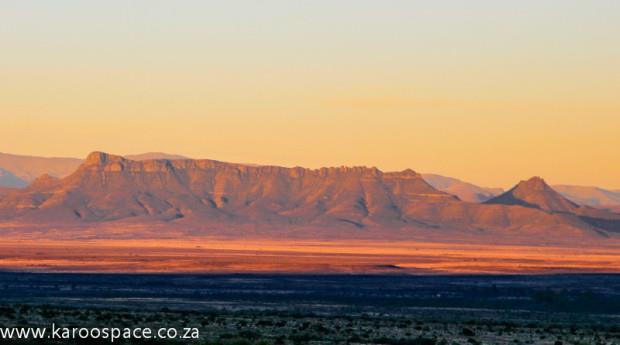GRAAFF-REINET NEWS - Roughly south of Graaff-Reinet is a little railway siding called Kendrew.
Drive through the area today and you'll see little sign of life.
But in 1926, nearly 150 people lived here, most of them with absolutely nothing to do but look forward to a monster drinking binge.
When the train passed through they'd invade the dining car, downing double and triple brandies and whiskeys, and if they still hadn't drunk enough, they'd often delay departure by sneakily uncoupling the last carriage.
They were mostly newly-arrived British citizens and the reason they had nothing to do is because they had been duped by one of the most cynical pieces of false advertising this country has ever seen.
Behind it all was an American insurance mogul Isadore William Schlesinger.
He had persuaded the Government to allow him to sell an irrigation scheme south of the proposed Van Ryneveld Dam (now Nqweba Dam).
Kendrew was theoretically all set to become a thriving little town attached to citrus orchards. There was going to be a movie house, bacon and cheese factories, a lucerne mill, a fruit drying plant, and a sports centre.
Schlesinger advertised a scheme in a brochure to British citizens, using pictures of Graaff-Reinet's feather palace Avondrust (with the caption "A Typical Residence"). There were also pictures of vineyards, lovely gardens and livestock on lush pastures, all taken on farms elsewhere that had taken many years to establish.
The Britons, many of them investing their war veterans' remittances, were assured that the 30 acres plus an additional 200 for grazing would be more than adequate for a thriving Karoo farm.
They were also told that even in a severe drought, imported sheep kept their condition, "where native springboks have succumbed", and that the climate was so healthy that "vets have tried in vain to earn a living here".
But no farming could happen before the just-built dam north of Graaff-Reinet filled up. So these newcomers to Karoo life slept in a temporary hotel, spent their days in the Club, and invaded the passing trains for more alcohol as a diversion from boredom.
Eventually, the dam filled up, the canals brought water and the newcomers set about creating farms. At its height, Kendrew had a bioscope (that doubled as a church on Sundays), a sports club, tennis courts and even a golf course.
The New Years' parties at the club were legendary.
But the Karoo's climate and a string of bad luck prevailed. The Great Depression combined with one of the worst droughts in 90 years. A noxious weed called Satansbos was accidentally imported with pig feed from South America, spread rapidly and affected grazing. Some say that 60 000 sheep perished in the Kendrew area.
The area was eventually abandoned, and the orchards died. Only the Satansbos, a few bluegums and ruins were left to tell the story.
And Schlesinger? He thrived. He went on to become the major player in cinemas and theatres in South Africa and was eventually chairman of more than eighty companies involved in various concerns - from hotels to canning to diamond cutting and newspapers.
• Popular Graaff-Reinet historian Andrew McNaughton wrote a far more detailed version of this story for his newsletter Karoo Connections, December 2007.
 The Camdeboo mountains.
The Camdeboo mountains.
 Kendrew: today there are only old trees and ruins.
Kendrew: today there are only old trees and ruins.
'We bring you the latest Graaff-Reinet, Karoo news'
















